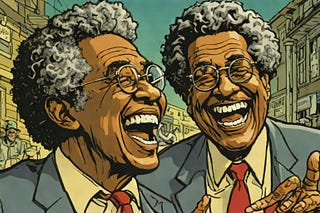
It’s late 1985 and Nintendo had sold 2.5 million units of their Famicom (Family Computer) home video game console in Japan, and they were desperate to enter the North American market. The system was released in 1983 in Japan and Nintendo had been in talks with Atari to help market and release the system in the U.S., but that deal had just fallen through.
The main point of resistance was U.S. retailers. They still had strong memories of the 1983 North American video game crash and were understandably reticent to allow a little-known Japanese company to take up their valuable store floor space. In 1983 retailers had allotted a large portion of their stores to Atari, Intellivision, and ColecoVision consoles, and the market was flooded with overpriced, poor-quality games from third-party developers. The situation had gotten so absurd that games were being released by companies far outside of the software development field, notably Quaker Oats and Purina Dog Food had hastily made games to sell to the public. Retailers were often ignorant of what games were good and bad and games like Purina’s “Chase the Chuck Wagon” would more often than not be sold instead of higher quality titles.
Nintendo believed they had solved this issue, as they strictly controlled who could release games for their console and how many games a third-party developer could release in a year. On top of that, only a few Japanese software developers had even signed on to make games for the Nintendo console and the majority of games were made by Nintendo themselves. By late 1985 the Nintendo console had a wide range of quality games. For the North American release they had the revolutionary game designed by Shigeru Miyamoto “Super Mario Brothers” ready to be released. The game had been a sensation in Japan and had boosted the popularity of the Famicom to new heights. Nintendo knew that if they could get Super Mario Brothers into the North American market they could revitalize the entire home console market and essentially have a monopoly to themselves.
Yet retailers would not budge, they would not waste shelf space on a new video game console. Nintendo went to work redesigning the Famicom into the larger Nintendo Entertainment System and instead of top-loading the games, the games went into the console like a VHS tape. The controllers were innovative as well, instead of a joystick and a singular action button Nintendo utilized a “d-pad,” an innovation they had created for previous very simple hand-held “Game and Watch” devices as well as two action buttons. This gave the system an intriguing modern look. Still, even this new design was not enough to get retailers to sign on.
So Nintendo came up with an ingenious plan. They designed a robot that could be plugged into the Nintendo. This robot dubbed R.O.B. which stood for “Robotic Operating Buddy” could actually help play certain games. The two games compatible with R.O.B. were “Gyromite” and “Stack-Up.” Nintendo promised improvements to R.O.B. and many more games, they enthusiastically marketed R.O.B. to retailers and convinced them that the NES combined with R.O.B. could be a sensation. Nintendo’s marketing strategy would exclusively feature R.O.B. and the console would be marketed as if R.O.B. was an essential part of the product.
This worked! The Nintendo Entertainment System was no longer seen as a foolish foray into the long-dead home console market by retailers and instead was seen as a platform for this innovative new toy robot. If a parent went to pick up their brand new Nintendo Entertainment System complete with a R.O.B. they might decide to maybe pick up a copy of “Super Mario Brothers” to give their children something else to do with the toy.
This is how Nintendo effectively used a marketing Trojan Horse to sell their console to people in North America. Not long after the release of the NES and R.O.B., the NES started to get packaged with a copy of “Super Mario Brothers.” Nintendo never released any more games compatible with R.O.B. and never upgraded or improved R.O.B.'s design. Retailers didn’t care because as Nintendo predicted, Super Mario Brothers became the real “killer app” and just like that the home console market was revived. Toy Stores gladly stocked their shelves with Nintendo games.
Nintendo gave itself a veritable monopoly on the North American home console market. Atari tried and failed to compete with their 7800 home console, and Sega’s Master System never caught on in North America. Nintendo wouldn’t get any real competition in North America until the Sega Genesis was released in 1989. Nintendo ended up selling over 60 million units of their NES/Famicom console. Super Mario Brothers would go on to spawn numerous sequels and be the top-selling video game franchise of all time.
Nintendo in 1985 and its many innovations are a strong example of an innovative and nimble company unafraid to take risks. The games produced and designed by Nintendo were not the only creative element of the company. Luckily for everyone involved the risks, and ingenuity paid off.
To me, a company like Nintendo stands out as why free nations should embrace free trade and innovations from other free nations. If the U.S. wanted to enact excessive tariffs to protect its own industries then the mutually beneficial Nintendo Entertainment System (as well as many other probably more important products and innovations) would have never made it to the U.S. Nintendo currently has 947 employees working directly for Nintendo of America, and countless third-party software developers and their employees from the U.S. are free to release games for Nintendo consoles. To add to the economic benefits, countless hours of enjoyment have been had playing games on Nintendo consoles.
It’s odd to think that it is possible that none of this would be possible without Nintendo’s Trojan Robot named R.O.B.
















